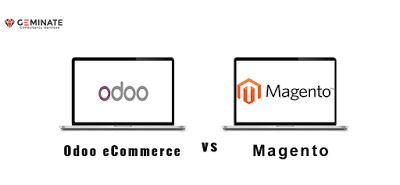How could individuals refuse to buy when they have so many options, such as low prices and access to the store 24 hours a day, seven days a week?
The ease with which people may buy products online has overtaken the ability of brick-and-mortar establishments to persuade customers to come inside.The number of people who choose to shop on the internet rather than in actual stores has risen dramatically in recent years.
Gone are the days when we would go shopping with our friends and family on the streets for clothes, home products, gifts, and other necessities.Today, no matter what things you want to buy, everything is available and can be done with a single touch.Your ordered merchandise is delivered right to your door, eliminating the need for you to go on a search.
It's rare nowadays to come across a popular store that doesn't have an internet presence.
Every company has realised the need of maintaining an online presence in order to attract clients.The convenience of buying 24 hours a day, seven days a week is a primary driver of this growing e-commerce trend.
People are not bound by any time zones while they shop, unlike during working hours.They can obtain information online at any time of day or night.In comparison to conventional stores, online offers a wider range of options.Customers also benefit from the best online discounts.
E-commerce stores make price comparison simple and profitable.When purchasing at a physical store, customers are frequently forced to make price concessions.They grudgingly agree to the seller's predetermined price.Because haggling or walking from store to store in quest of the greatest prices isn't easy.
Price comparison is simple and quick with e-commerce.Furthermore, unlike conventional stores, internet stores have no restrictions.Customers can shop from anywhere in the world using online stores, and from a wide range of options shown on these websites.
Online shopping is on the rise.
In terms of the retailer's perspective, the eCommerce website overcomes geographic limitations.The seller cannot reach out to huge customers in a physical store. They can, however, transcend regional boundaries via eCommerce.
Second, with an eCommerce site, retailers may use search engines to attract new customers.With a physical business, your branding is entirely dependent on word of mouth and other promotional incentives.However, with eCommerce, search engines bring in a flood of traffic.One might also keep an eye on the purchasing behavior of customers.
Last but not least, inventory management costs are falling.Because eCommerce automates the inventory management system, the operational cost of setting up several warehouses is greatly reduced.It is feasible to conduct sales through eCommerce even if you do not have product on hand.With real stores, however, this isn't feasible.
With the rise of e-commerce trends, the number of e-commerce software programmers on the market has increased.If you're looking for the best e-commerce software, you'll come across a slew of options, including Odoo e-Commerce, Magento, Shopify, BigCommerce, OpenCart, and a slew of others.Each application offers to provide useful features for selling items online.
However, keep in mind that selecting the proper and best e-Commerce software can only assist you to survive in a sea of fashionable businesses and earn a profit.
How much do internet shoppers spend around the world?
This just goes to show how important it is to have your own eCommerce store to attract clients.As previously stated, there are a plethora of E-commerce software options on the market that promise out-of-the-box solutions for selling things online like it's a walk in the park.
If you look at them from afar, you might think that all of the solutions are the same.
They might not be, though.Each software will differ from the next in terms of pricing, simplicity of use, design flexibility, and value for money.
What is the best way to choose the best eCommerce software?
Choosing the finest eCommerce software is usually difficult because there are so many factors to consider, such as pricing, functionality, scalability, user-friendliness, and so on.
However, you must consider the following things to assure your eCommerce store's spectacular sales growth.
1) Search Engine Optimization (SEO) Compatibility
2) Mobile Compatibility
3) Safety Functions
4) Scalability of the Platform
5) System for Product Management
6) Order Processing System
7) System for Return Management
8) Integration of many channels
9) Option for Multiple Payments
With so many eCommerce software options on the market, each offering something different, you're stuck deciding what to use and how to use it.
You may not require all of the functions offered in the app, but you cannot ignore the vast majority of them.
As a result, selecting the finest eCommerce application is solely dependent on your knowledge of your company's characteristics.The most important thing to do before selecting an application is to understand the business requirements.
In the market, there are primarily two types of eCommerce applications:
1) SaaS-based eCommerce platform
2) Open-source eCommerce platform
The SaaS eCommerce platform is well-known for its speed and ease of use.It does not necessitate any coding expertise or a technical staff to develop the app. Users may easily sign up and set up their online store using the ready-made application that is hosted online.
The disadvantage of using SaaS-based eCommerce is the high recurring cost.
With the extension time, the price can rise tremendously. Furthermore, you will not have the option of modifying the programmed to meet your specific needs.You must be content with the current functionality and totally rely on the seller to resolve any issues.
You won't have such problems if you use open source.
When you choose open source eCommerce software, you gain source code and complete control over your eCommerce website and business. In comparison to SaaS, users can expect greater scalability and customisation from the programmed.It is feasible to micro-personalize a website using an open-source eCommerce platform by using many additional modules.
As a result, you may rest assured that you've chosen the best eCommerce software for your company. If your website requires an additional payment gateway, for example, you can simply install a module and make the option available in your application.
With opensource eCommerce, it's as simple as that.
In 2021, below are the top five opensource eCommerce platforms:
Odoo eCommerce
Magento
Prestashop
Drupal Commerce
Open-Source Shopping Cart
Odoo vs Magento
Odoo and Magento, two prominent e-Commerce software programmed, are examined in depth in this article.We'll look at how they differ in terms of pricing, design, functionality, and customer service, among other things.
At the end of the day, you'll be able to choose between the two.
This post is for you if you're thinking about starting your own online store and are seeking for the best e-Commerce application. All of the characteristics we covered previously should be included in the finest eCommerce application. It's not only that adding a "Buy" button to your eCommerce software makes it more useful and effective.
Many functions should be included in the e-Commerce application to keep inventory, accounts, marketing, and other aspects in check.The eCommerce application should, above all, be user-friendly.Customers will return more often if the site is easy to use, which will result in increased sales. Without further ado, let's have a look at how Magento and Odoo can help you increase your sales.
Magento is unquestionably the king of e-commerce software.
With its own charms and fancies, the programme quickly became a favourite in the e-commerce industry.Magento debuted with a beautiful and effective design to attract clients and quickly build a large customer base for themselves.
Odoo vs Magento: Feature comparison
PRODUCT MANAGEMENT
Catalog Management | Magento Enterprise | Odoo Enterprise |
Configurable products | Yes | Yes |
Product Inline Page Builder | No | Yes |
Product Inline Page Builder | Yes | Yes |
Digital Products | Yes | Yes |
Product reviews | Yes | Yes |
Recurring Products(subscriptions) | Via extension | Yes |
Inventory Management | Magento Enterprise | Odoo Enterprise |
Barcode Support | Via extension | Yes |
Product Demand Forecasting | Yes | Yes |
Stock On Hand | Yes | Yes |
Stock Available | Yes | Yes |
Supply chain | Via extension | Yes |
Return/Exchange Managemen | Yes | Yes |
Shipment Tracking | Yes | Yes |
Backorders Management | Via extension | Yes |
Multiple Warehouses | Yes | Yes |
Purchase Management | Via extension | Yes |
Inventory Reports | Yes | Yes |
DESIGN
General | Magento Enterprise | Odoo Enterprise |
WYSIWYG Editor | Yes | Yes |
Drag & Drop Page Builder (Building Blocks) | No | Yes |
Responsive Web Design | Yes | Yes |
Auto-Generated Sitemaps | Yes | Yes |
Customizable HTML/CSS | Yes | Yes |
eCommerce Usability | Magento Enterprise | Odoo Enterprise |
Breadcrumb Navigation | Yes | Yes |
Site Search Engine | Yes | Yes |
Sorting of Search Results | Yes | Add-on |
Product | Magento Enterprise | Odoo Enterprise |
Multiple Pictures per Product | Yes | Yes |
Bulk Image Upload | Yes | No |
Bulk Product Import/Export | Yes | No |
Hierarchy of Categories | Yes | Yes |
CUSTOMER MANAGEMENT
General | Magento Enterprise | Odoo Enterprise |
Cart Abandonment Tracking | Yes | Yes |
Persistent Cart | Yes | Yes |
Customer Portal | Yes | Yes |
Buy Without Signup | No | Yes |
Customer Testimonials | Yes | Yes |
Customer Contact Form | Yes | Yes |
Customer Order History | Yes | Yes |
Customer Specific Prices | Yes | Yes |
Live Chat on Website | No | Yes |
Affiliates Management | Yes | Add-on |
Wish List | Yes | Yes |
SHIPPING
General | Magento Enterprise | Odoo Enterprise |
Custom Shipping Rules | Yes | Yes |
Flat Rate Shipping | Yes | Yes |
Label Printing | Yes | Yes |
Gift Wrapping Option | Yes | Yes |
Free Shipping Options | Yes | Yes |
Weight Based Shipping | Yes | Yes |
Shipping Connectors: DHL | Extension | Yes |
Shipping Connectors: UPS | Extension | Yes |
Shipping Connectors: USPS | Extension | Yes |
Shipping Connectors: FedEx | Extension | Yes |
PROMOTION AND MARKETING
General | Magento Enterprise | Odoo Enterprise |
Email Auto Response | Yes | Yes |
Email List Management | No | Yes |
Drag & Drop Mail Designer | No | Yes |
Affiliate Program Support | Yes | No |
Coupons & Promo Codes | Yes | Yes |
Reward Points | Yes | No |
Discount Management | Yes | Yes |
Customizable Email Templates | Yes | Yes |
Integrated A/B Testing | Via extension | Yes |
Gift Cards | Yes | Add-on |
Product Ratings | Yes | Yes |
Product Bundling | Yes | Yes |
Product Comparison | Yes | Add-on |
Up-sells in Shopping Cart | Via extension | Yes |
Cross-sells on Product Pages | Yes | Yes |
eBay Marketplace Integration | Via extension | Yes |
Amazon Marketplace Integration | Via extension | Add-on |
Private Sales | Yes | Yes |
Site-Wide Banner Advertising | Yes | Yes |
SEO (Search Engine Optimization)
General | Magento Enterprise | Odoo Enterprise |
Integrated SEO | Yes | Yes |
Inline SEO Suggestions | No | Yes |
Optimized URLs | Yes | Yes |
Link Tracker | No | Yes |
SALES MANAGEMENT
General | Magento Enterprise | Odoo Enterprise |
Sales Reports | Yes | Yes |
Search Reports | Yes | No |
Data Import | Yes | Yes |
SSL Support | Yes | Yes |
Integrated Invoicing | No | Yes |
Multi-Store Support | Yes | Yes |
Taxes by Country/State | Yes | Yes |
Advanced Taxes: Fiscal Positions | No | Yes |
Payment & Pricing Features | Magento Enterprise | Odoo Enterprise |
Payment Gateway: Redirect | Yes | Yes |
Payment Gateway: Server 2 Server | No | Yes |
Recurring Payments | No | Yes |
PayPal Integration | Yes | Yes |
Multi-Currency/Multi-Providers | Yes | Yes |
REPORTING
Reports | Magento Enterprise | Odoo Enterprise |
Sales Report | Yes | Yes |
Inventory Reports | Yes | Yes |
Subscription KPIs (MRR, Churn, etc.) | No | Yes |
Google Analytics Integration | Via extension | Yes |
Product Performance Reports | Yes | Yes |
Sales Summary Reports | Yes | Yes |
Site Search Report | Yes | No |
Report Engine | Magento Enterprise | Odoo Enterprise |
Dynamic Graphs | Via extension | Yes |
Dynamic Pivot Table | No | Yes |
Customizable Dashboard | Yes | Yes |
Export Report to Excel | Yes | Yes |
PRODUCTIVITY AND USABILITY
Productivity | Magento Enterprise | Odoo Enterprise |
Ability to Add Fields in Backend | No | Yes |
Ability to Add Fields in Front-end | No | Yes |
Usability | Magento Enterprise | Odoo Enterprise |
Full Web Interface | Yes | Yes |
Fast Backend (Ajax) | No | Yes |
Responsive Backend | No | Yes |
Multi-language | Yes | Yes |
Interfaces | Magento Enterprise | Odoo Enterprise |
API | Yes | Yes |
Apps Store | 94,201 extensions | 21,946 apps |
Which eCommerce software is easier to set up: Odoo or Magento?
When it comes to usability, Odoo has the upper hand over Magento. When compared to the latter, Odoo is far easier to set up and utilize. The e-Commerce website may be built and aligned effortlessly using numerous modules accessible in the Odoo app store.
Odoo's website builder's simple drag-and-drop construction elements allow users to create their own website without requiring much expert support. To micro-personalize your website, however, you may want the help of Odoo developers who are well-versed in both technical and functional understanding.
When it comes to creating an eCommerce website, the importance of UI/UX is enormous.The benefit of using Odoo ERP is that you have access to a large community of trained, certified, and professional Odoo developers.These developers have access to a variety of tools, such as documentation and community forums, which aid in the speedy resolution of key issues.
Hiring Odoo developers from a reputable and recognized Odoo will undoubtedly provide you with business growth benefits.
Odoo vs Magento: Cost Comparison
The cost of deploying Odoo and Magento is determined by the platform chosen, which might be opensource or closed.
Both Odoo and Magento's opensource versions will be quite rudimentary and will lack many of the capabilities that an eCommerce platform must have.
Users who choose the enterprise edition, on the other hand, will gain access to advanced features such as integrations, SEO friendliness, and more.
When it comes to pricing, both Magento and Odoo are open-source and free.
Enterprise license rates, on the other hand, varies between Odoo and Magento.
| Magento Enterprise | Odoo Enterprise |
MONTHLY PRICING | $1500 | $25/user |
FREE CLOUD VERSION | No | Yes |
CONTRACT DURATION | Yearly | Yearly |
FREE TRIAL | No | Yes |
FREE UPDATES | No | No |
UPGRADES TO FUTURE VERSIONS | No | No |
HOSTING AND MAINTENANCE | No | No |
SUPPORT | Yes | Yes |
Conclusion:
Despite the fact that Magento appears to be the market leader in e-commerce software, Odoo remains a strong contender. Odoo is swiftly catching up to Magento, completing all of the front end capabilities that Magento is known for. The upstart rival, on the other hand, places a heavy emphasis on sophisticated features (back-end) for the management of eCommerce operations.
Odoo has outstanding administration options, from providing a solid and stable infrastructure to ensuring the website's SEO friendliness. Magento will face a serious danger in the near future. Odoo eliminates the need for businesses to rely on costly extensions and separate applications.
Odoo e-commerce is already integrated with the ERP's other modules. And this poses a serious threat to Magento. Magento might be an excellent alternative if your eCommerce store's requirements are fairly minimal and don't require a large number of integrations. Odoo, on the other hand, is a suitable option if you want a lot of integration options.
Odoo is more open to integrations and customization than Magento. Odoo's capabilities can easily be expanded by linking the app with third-party software. Odoo's extensive API library and web service make practically any Odoo integration possible.
Finally, with no licence charge for Odoo Community, Odoo eCommerce will continue to be a viable option for small businesses looking to launch their own online stores without making suffer their pockets.
Reference Link : https://www.geminatecs.com/blog/odoo-ecommerce-vs-magento





